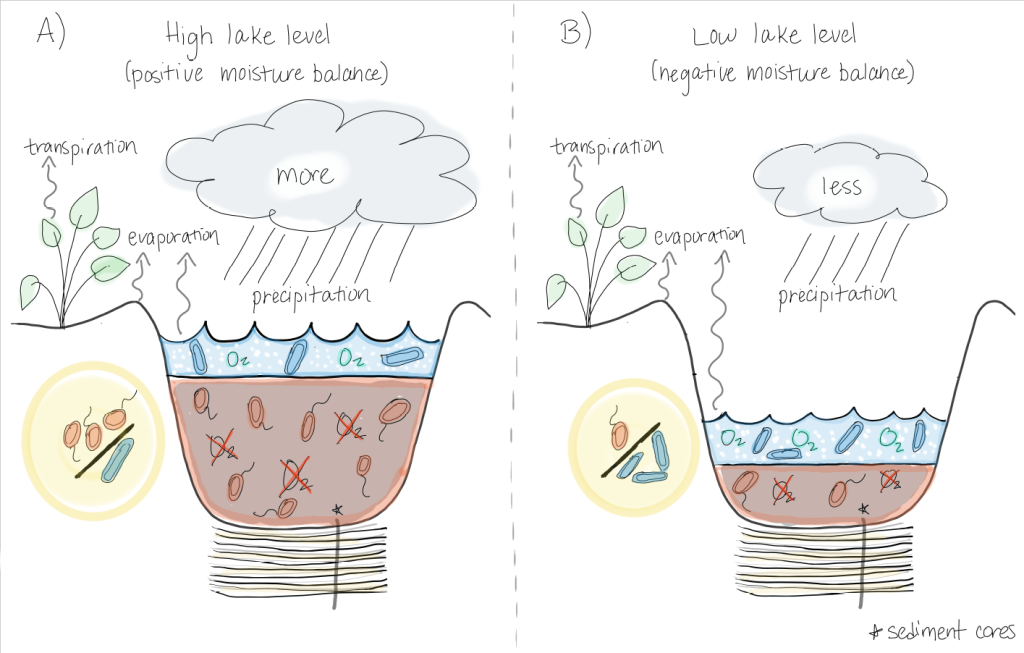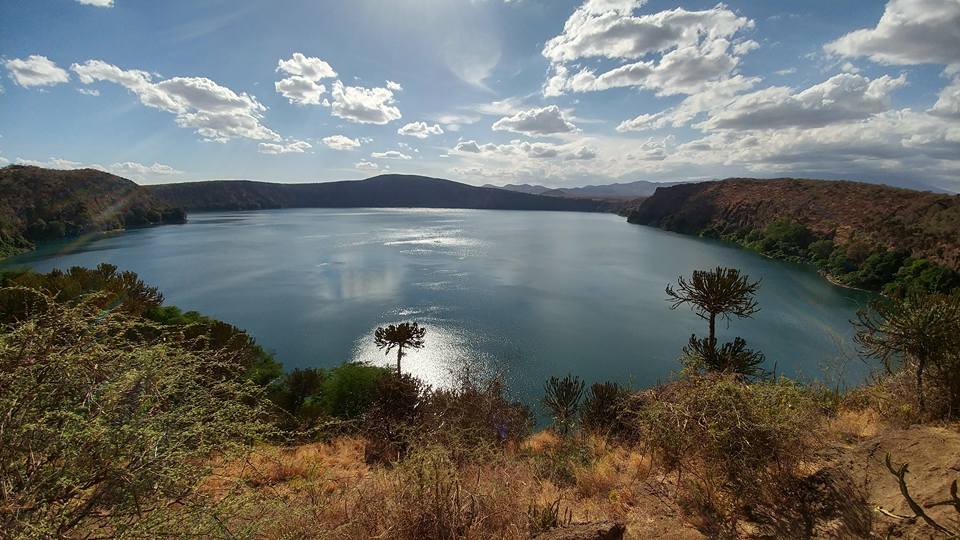NESSC research discovers a drought tipping point
New NESSC study helps to explain intensifying drought conditions in the Horn of Africa.
—
For decades climate models show that increasing global warming leads to an intensifying hydrological cycle, with wet regions becoming wetter and dry regions becoming more dry. Yet certain tropical regions, like the Horn of Africa, have become drier and drier across the years with disastrous consequences. A new NESSC study, published in the scientific journal Nature, reveals a pre-historic climate tipping point that helps to explain the disparity between model predictions and the intensifying drought conditions in the Horn of Africa.

The research team, including NESSC researcher Allix Baxter (Utrecht University) and Dirk Verschuren (Ghent University), found an explanation for the disparity while studying the sediments of Lake Challa that straddles the border of Tanzania and Kenya. Their study shows a tipping point in the climate after which warmer temperatures no longer led to wetter conditions.
In 2016, several NESSC researchers, among which dr. Francien Peterse (Utrecht University), accompanied the ICPD drilling expedition. After five years of preparation, it took the team three months of fieldwork involving over a hundred people to install the drilling barge and recover the sediment cores. The expedition successfully retrieved over 200 consecutive meters of sediments from the crater lake – a rare geological archive of tropical climate going back over hundred thousand year.
Sediment cores
“We studied sediment cores taken from the bottom of the lake dating back to 75,000 years ago,” Baxter tells. “From these sediments we were able to figure out how the lake depth and regional temperature changed through time.”
The depth of the lake reflects changes in moisture balance: the amount of rainfall minus the amount of evaporation. In the tropics, higher temperatures typically bring along wetter weather due to stronger monsoons. At the same time, higher temperatures also cause more evaporation : water evaporates more easily in warmer air easily.

Tipping point
“We found that, during the last ice age between 75,000 and 11,700 years ago, higher temperatures in the Horn of Africa did indeed produce a wetter climate,” Verschuren explains. “However, around 11,700 years ago, when the region’s temperature rose naturally by a few degrees, we saw a tipping point in which higher temperatures led to increased drought, and lower temperatures meant wetter conditions.”
This fundamental change in the relationship between temperature and moisture in the Horn of Africa has since locked this region into a dry tropical climate regime, which the researchers expect to continue as temperatures keep rising in the future. “This finding matches with the increasing number and severity of droughts we now see happening in the Horn of Africa,” Baxter underlines.
As most inhabitants living in the Horn of Africa depend on rain-fed agriculture, the new research suggests that region is likely to become even drier, not wetter in the future as predicted by most climate models. Baxter: “Though it’s still debated what the cause is of these recent droughts, our research provides the clue to an underlying mechanism. Our data has revealed certain processes that we hope are better incorporated in the climate models to more accurately predict long-term future climate change in this and other tropical regions.”
Article
Reversed Holocene temperature–moisture relationship in the Horn of Africa
Nature, 2023.
J. Baxter, D. Verschuren, F. Peterse, D. G. Miralles, C. M. Martin-Jones, A. Maitituerdi, T. Van der Meeren, M. Van Daele, C. S. Lane, G. H. Haug, D. O. Olago and J. S. Sinninghe Damsté


